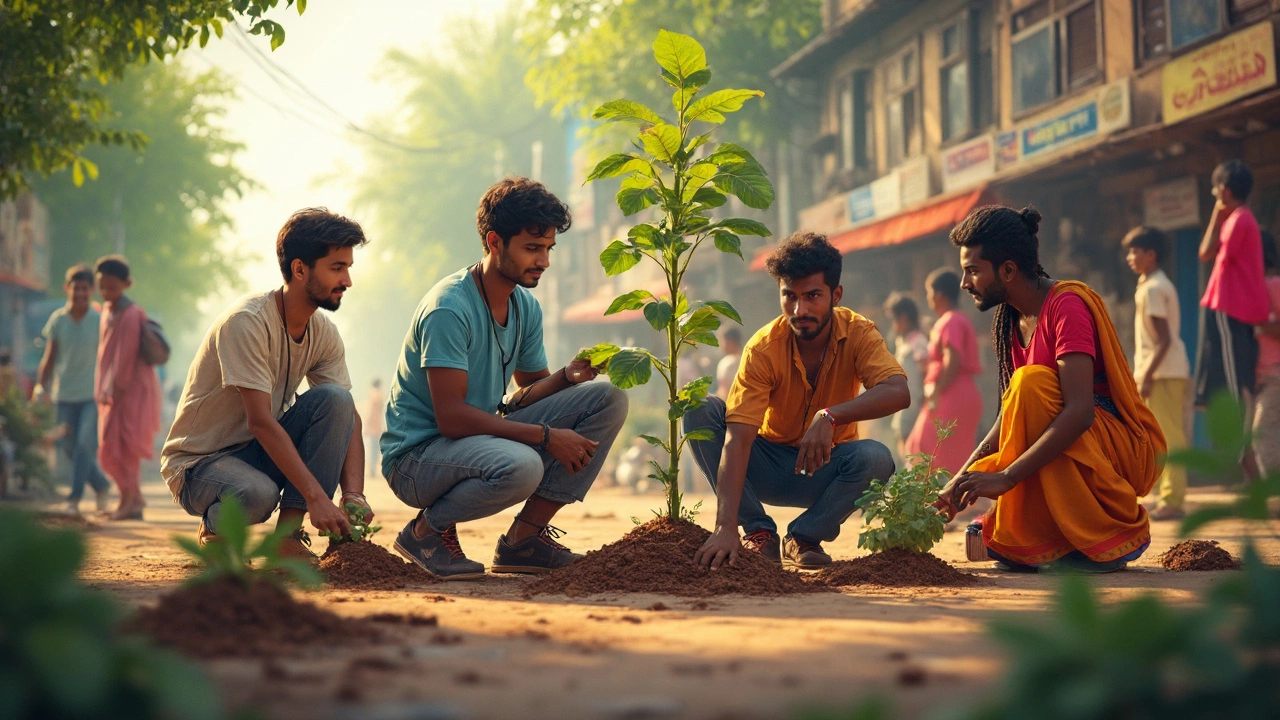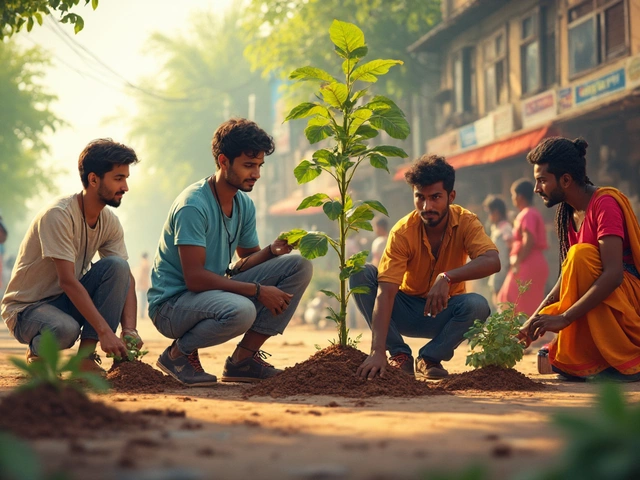When it comes to volunteering, you might assume that everyone pitches in equally, but that's not quite the case. Volunteering trends show fascinating differences when you break them down by race. Recognizing these patterns helps organizations create more inclusive and effective volunteer opportunities.
Let's start with some quick facts. Research often shows that certain groups are more or less likely to volunteer. For instance, in the US, white individuals traditionally report higher volunteer rates than some minority groups, but that's not the whole story. Factors like community values, access to opportunities, and cultural perspectives play important roles.
Understanding these dynamics isn't just about stats; it's about improving how volunteer programs operate. If organizations tailor their strategies based on these insights, they can engage a broader spectrum of people, amplifying the impact of their initiatives.
- Understanding Volunteering Trends
- Race and Volunteering: Key Statistics
- Factors Influencing Volunteer Participation
- Impacts of Cultural Background
- Boosting Diversity in Volunteering
- Practical Tips for Inclusive Volunteering
Understanding Volunteering Trends
When it comes to volunteer trends, there's so much diversity out there in terms of who’s stepping up and getting involved. You might be surprised by some of the numbers and the stories behind them.
Let's talk numbers first. Based on recent data from the Corporation for National and Community Service, around 77 million people volunteer annually in the United States. This represents roughly 30% of the adult population. However, when broken down by race, the figures show some interesting patterns. Historically, white Americans have shown the highest volunteer rates at about 28-30% of their racial group. Meanwhile, African Americans volunteer at rates nearer to 20% and Hispanic or Latin communities closer to 15%.
Why Do These Trends Exist?
There are several reasons behind these differences. Access to volunteer opportunities, for instance, can vary based on geographical and socio-economic factors. Communities with more resources often have better access to structured volunteer programs. Furthermore, cultural values around community service differ, impacting volunteer rates. Some groups may engage in unrecorded forms of volunteering, like helping a neighbor or participating in religious or cultural events, which aren’t always counted in formal stats.
Demographics and Shifts
It's worth noting that these trends aren't set in stone. As demographics shift and grow, so too do volunteering habits. Younger generations, especially, are showing changes. They often prefer volunteering in ways that feel relevant and impactful, like social justice initiatives. They're also more likely to share these experiences online, inspiring others to join in.
By understanding these demographics and volunteering trends, nonprofits and community leaders can work toward creating more inclusive opportunities. Tailoring programs to meet specific community needs while making them accessible and relevant is key.
Race and Volunteering: Key Statistics
Diving into the numbers, you'll see some intriguing patterns in who volunteers and why. According to the U.S. Bureau of Labor Statistics, around 26.5% of white adults volunteered in the past several years. Other racial groups, such as African Americans and Hispanics, volunteered at rates closer to 19% and 15% respectively. These figures show that volunteer trends can vary quite a bit depending on racial backgrounds.
You might ask why these differences exist. Often, it's not a matter of willingness but rather access to opportunities and differing cultural values around community engagement.
"Volunteering is more than just a few hours given—it's a reflection of accessibility, cultural perspectives, and community involvement," says Melissa Allen, Director at the National Volunteer Association.
So what does this mean for organizations that depend on volunteers? It's crucial to understand these nuanced trends to engage a wider audience effectively.
Exploring Further: Volunteering Outlook
Looking ahead, organizations aiming to boost diversity in volunteering need to address the challenges of awareness and accessibility. Tailored outreach and understanding cultural preferences can make a big difference.
Here's a quick overview of some numbers from a recent survey:
| Race | Volunteer Rate (%) |
|---|---|
| White | 26.5 |
| African American | 19.0 |
| Hispanic | 15.0 |
By using this data, organizations can better shape their strategies to include people from all backgrounds, ensuring that everyone has the chance to contribute to the community involvement that makes our society stronger.
Factors Influencing Volunteer Participation
Getting involved in volunteering isn't just about having spare time or a big heart, though those are part of it. There are several factors that shape who steps up to volunteer and who doesn't.
Access and Opportunity
One big player is access to volunteer opportunities. Some communities just have more doors open when it comes to volunteering. Urban areas often offer a smorgasbord of opportunities, while rural locations might have fewer selections.
Economic Factors
Let's not forget the money side of things. Individuals from higher economic backgrounds tend to volunteer more. Why? They often have jobs that allow for flexible hours or they don't need to work extra shifts to make ends meet.
"Volunteering is more common among those who have the financial security to give time without impacting their livelihood," says Dr. Emily Greene, a sociologist who studies civic engagement.
Social and Community Norms
Some communities are just more wired for volunteering. If your neighbors are all about helping at local food banks or coaching kids' sports, you're more likely to hop on board. So, community traditions can really sway volunteering rates.
| Factor | Impact on Volunteering |
|---|---|
| Access to Opportunities | Higher in urban areas |
| Economic Security | Increases participation |
| Community Norms | Encourages local involvement |
Cultural Perspectives
Different cultures see volunteering in different lights. Some might focus on family-first support, while others look to help the broader community. Understanding these perspectives can really help organizations tailor their outreach.
In the end, recognizing these factors isn't just about getting more people to volunteer. It's about creating fair, inclusive volunteer trends that reflect the whole spectrum of society.

Impacts of Cultural Background
Cultural background shapes how people perceive and engage in volunteer opportunities. Some communities have a strong tradition of giving back, deeply embedded in their cultural practices. Others might not have such a legacy, influencing how they approach volunteering.
For instance, many Hispanic communities emphasize 'familismo,' a focus on family loyalty and community support, which can drive higher participation in local events and collective volunteer efforts. Similarly, Black communities in the US often participate in volunteer work related to faith-based organizations and initiatives due to longstanding community networks centered around churches.
The Influence of Socioeconomic Factors
Cultural background and race often intersect with socioeconomic status, further influencing volunteer behaviors. Communities facing economic hardships might prioritize immediate family needs over volunteering, even if the desire to help is strong. This doesn't mean they aren't interested; it's often just a matter of capacity.
| Racial Group | Common Volunteer Areas |
|---|---|
| White | Environmental causes, education |
| Black | Faith-based, community services |
| Hispanic | Family services, cultural events |
Communicating Across Cultures
To effectively engage diverse communities, it’s vital for organizations to understand and respect these cultural nuances. Programs that tailor their outreach to align with cultural values are more successful. For example, engaging Hispanic volunteers might mean involving family units in activities, while approaching Black communities could involve partnerships with local churches.
Understanding these cultural impacts doesn't just help in reaching out but also in crafting volunteer experiences that feel meaningful and rewarding for everyone involved.
Boosting Diversity in Volunteering
Creating a more inclusive environment in volunteering isn’t just a nice-to-have; it’s essential. Diverse groups bring fresh perspectives, richer ideas, and create a more comprehensive impact in any community project. But the question is, how do we get there?
Understand and Address Barriers
First, recognize that different racial groups face unique challenges. For instance, African American and Hispanic communities might struggle with fewer resources or access points to volunteer opportunities. Understanding these barriers is the initial step to overcoming them. Surveys and open forums can be great tools to pinpoint specific issues.
Partner with Local Organizations
Next, team up with local organizations that are already trusted in these communities. They have the know-how and networks to open doors that might otherwise be closed. Plus, seeing familiar faces running events can encourage more participation from minority groups.
Culturally Relevant Programs
Then, design programs that resonate culturally. It could be through celebrating important cultural events with volunteer work or using culturally relevant narratives in your outreach. This connects more personally and shows genuine interest in the community’s values.
Offer Flexible Volunteer Opportunities
Flexibility matters a ton. Sometimes rigid schedules just don't fit into people’s lives, especially for those balancing multiple responsibilities. Offering both traditional and virtual options or varied time slots can make a big difference.
Develop and Empower Leaders
Finally, don’t just invite diversity to join in at entry levels—encourage leadership too. Empower individuals from different cultures to take on leadership roles in projects. This not only boosts your team’s cultural insight but also inspires others to volunteer when they see representation at higher levels.
Boosting diversity in volunteer demographics isn't just about numbers; it's about tapping into the full potential of community power. When everyone’s voice is heard and valued, the possibilities are endless.
Practical Tips for Inclusive Volunteering
Creating an inclusive volunteering environment can be a game-changer. It's not just about getting more people involved; it's about tapping into the unique strengths and perspectives that different racial and cultural backgrounds bring to the table. Let’s talk tips to make it happen!
Understand Your Community
Start with a deep dive into your local area. What races and ethnicities are most represented? Use this understanding to tailor volunteer opportunities that feel relevant and accessible to everyone. Reach out to community leaders for insights.
Remove Barriers
Eliminate obstacles that might prevent people from volunteering. This could mean offering transportation solutions, having flexible volunteer hours, or providing materials in multiple languages. The simpler you make it, the more folks will feel welcomed to join.
Promote Cultural Awareness
Foster a space where everyone feels respected and valued. This might involve training sessions on cultural sensitivity for existing volunteers and staff. Encourage open conversations about diversity and inclusion.
Partner with Diverse Organizations
Collaborate with groups that already have strong ties to various communities. This not only increases your reach but also shows your genuine interest in inclusivity. These partnerships can open up new opportunities for joint projects.
Tailor Your Messaging
How you communicate matters. Craft messages that highlight the impact of volunteering on diverse communities. Use channels that are popular with different groups—social media, community newsletters, or local events.
Track and Share Progress
Finally, keep tabs on your volunteer demographics and assess your inclusivity efforts. Share these results with your volunteers and celebrate milestones along the way. Transparency builds trust and strengthens community bonds.
Inclusive volunteering isn't just a nice-to-have; it’s necessary for making a real impact. By focusing on diversity and breaking down the barriers, you enrich both the volunteer experience and the communities you serve.


